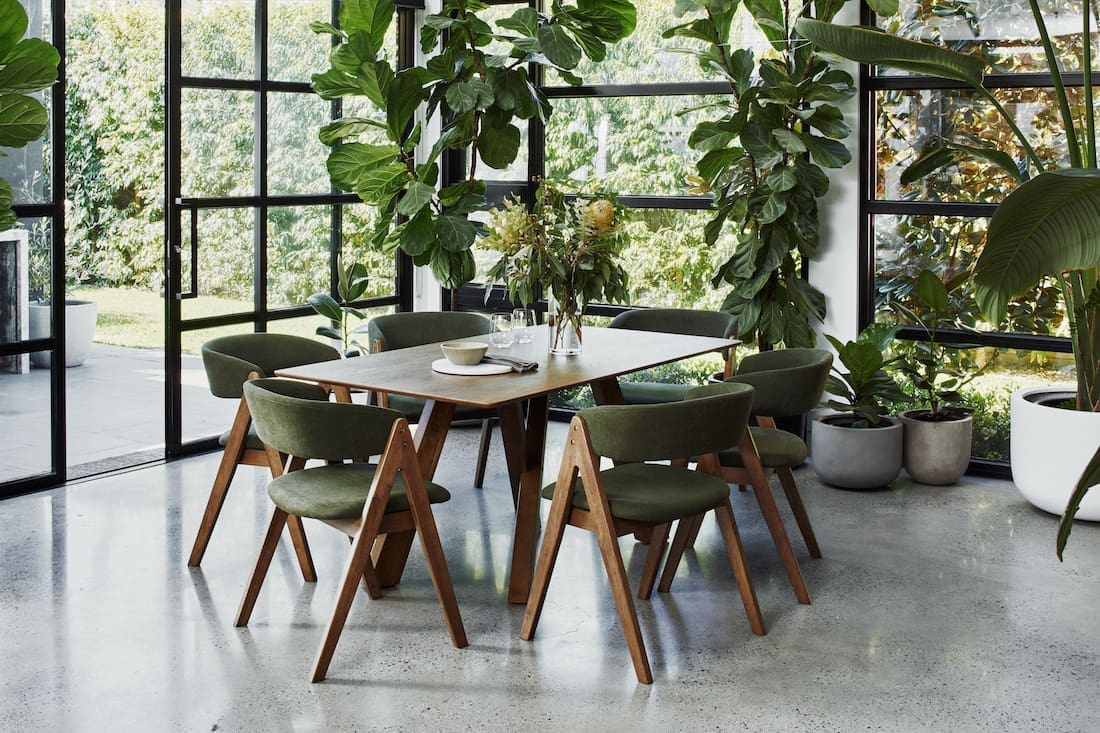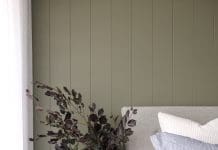Supported by B2C Furniture
We love switching things up around the home as much as the next person. But continually following trends or buying new furniture and décor comes with an environmental cost. So recently we’ve been looking for sustainable and eco-friendly ways to decorate the home.
Here are 8 ideas to decorate your home sustainably — no matter your budget or interior style!
Related article: Rich timber textures and a timeless aesthetic — the sustainable heritage-listed home renovation of Laneway House
Related article: 11 easy ways to reduce plastic around the home

1. Take time to identify your personal style
Too often, the need to replace or buy new is because we’ve rushed a purchase that isn’t quite right.
Some reasons we need to replace furniture or décor include:
- it doesn’t fit your space… literally!
- the colours or patterns don’t suit your other furnishings
- it seemed like a bargain but the quality was low.
The best way to avoid these issues is to have a plan before hitting the shops. We always suggest taking the time to develop a mood board so you can hone in on your personal style. And if you plan on buying furniture, it also pays to measure up your room (taking note of doorways and windows).
Many of us are happy to spend a bit extra on a piece we KNOW will be perfect. So take a little time to plan ahead and you’ll avoid costly mistakes.
2. Invest in long-lasting design
Let’s say bye-bye to the fast furniture trend, shall we?! There’s no joy in furnishing our homes in sub-standard items that only last a season or two before ending up in landfill.
Instead, let’s embrace pieces that are made to last. Not only do higher quality items elevate the look and feel of our home, it saves so much unnecessary waste.
Before you think made to last means spending a fortune, let us introduce you to B2C Furniture. With a motto ‘Furniture shouldn’t cost the earth, nor should it cost the earth its survival’, they’re on a mission to give consumers sustainable choices. Their range of premium quality furniture is made from sustainably sourced hardwood — not inferior chipboard. That means it has a long lifespan and can be repurposed once its time as a bed, coffee table or chair has come to an end.
There’s a growing range of sustainable furniture and home décor businesses entering the market. So no matter what you need to buy, you should be able to find lower impact options that can fit your style and budget.
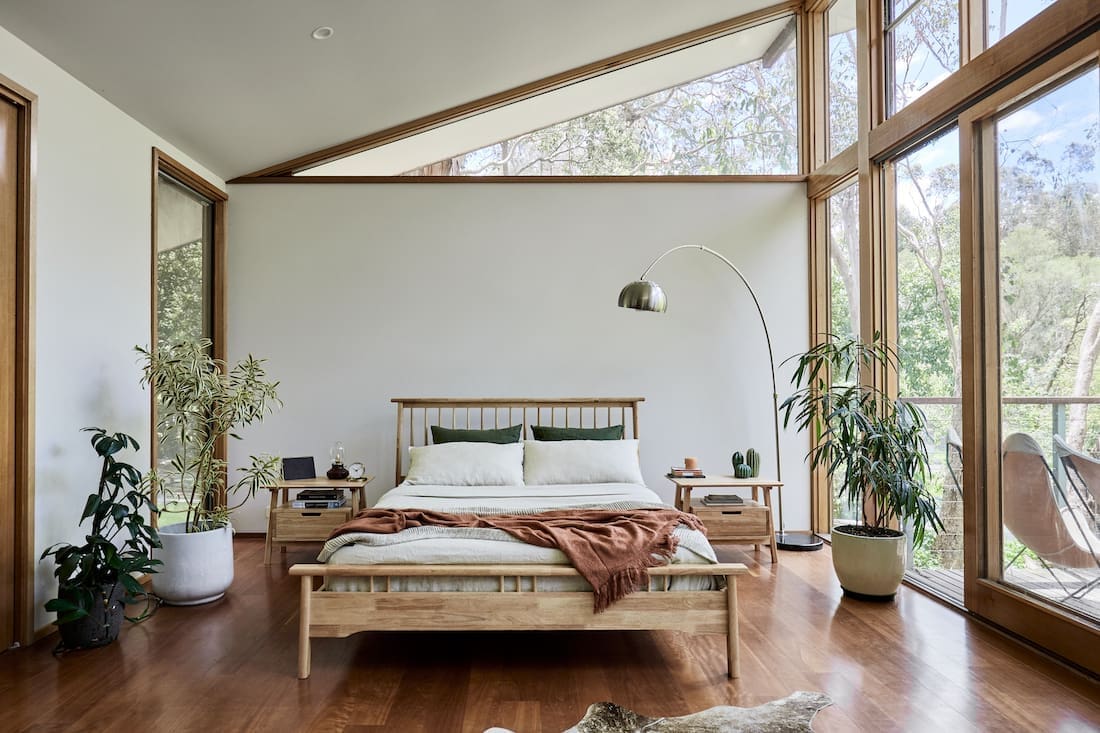
3. Repair or repurpose
Sometimes it isn’t necessary to buy new at all. With some imagination objects can often be repaired or repurposed.
For example, rather than replacing a worn-out armchair, it may be possible to reupholster it. Or rather than getting rid of a chipped vase, it could be given a new look. The trash to terracotta trend is an excellent way to give dated décor a new lease on life.
You may also find items sitting in your backyard that you can repurpose in your home. For example, industrial items like crane mats, which are usually used in construction sites, can be repurposed in creative ways. Since they are highly durable, you can use them for partition walls in your home or flooring in outdoor spaces.
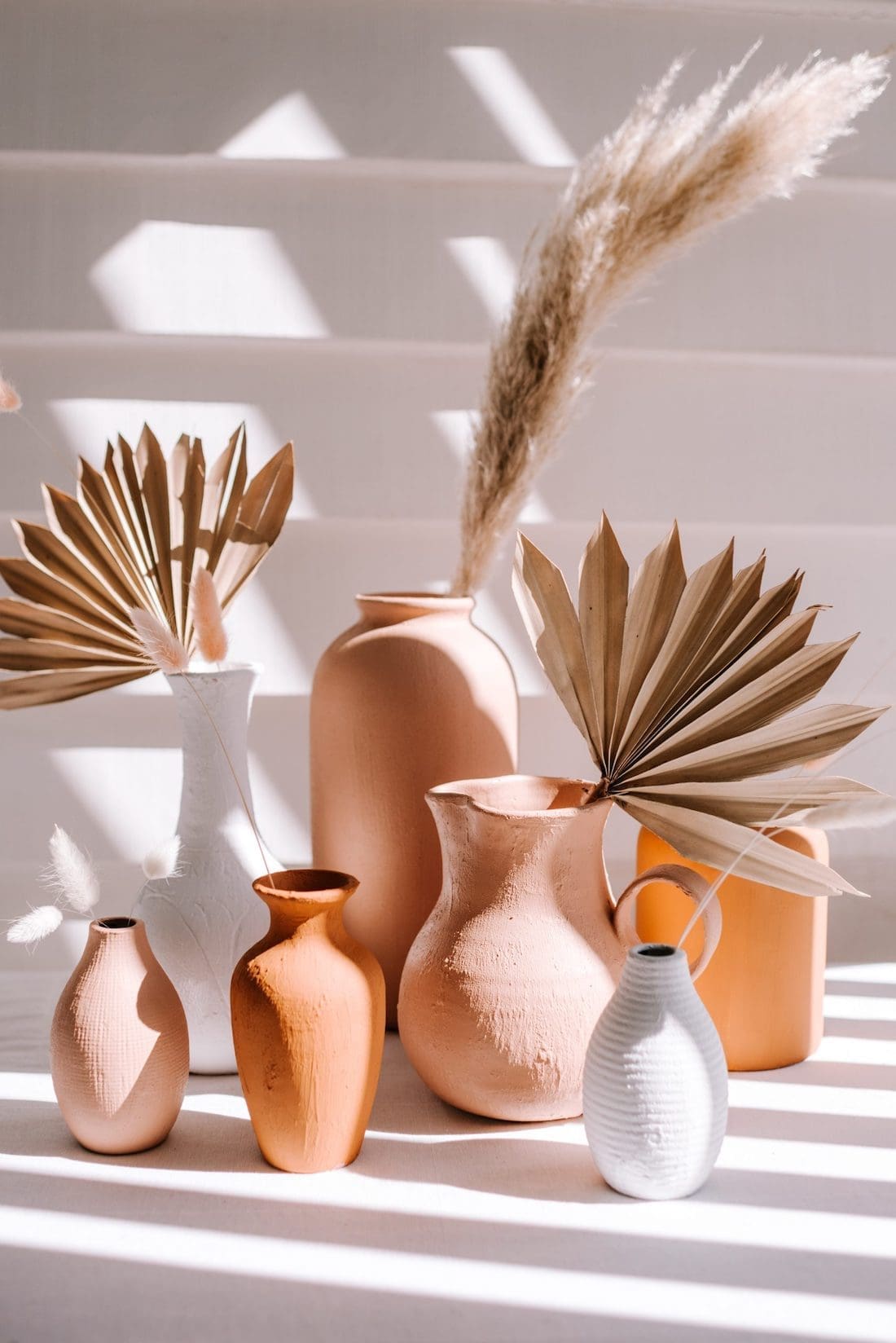
4. Buy vintage or second hand
Similarly, when shopping for your home, it’s worth looking at second hand options including:
- vintage and antique stores
- op-shops and second-hand stores
- Facebook marketplace and Gumtree.
Not only can buying second hand save you money, it reduces the need to produce more. Sure, it can be like a treasure hunt trying to find the right pieces but it can also be exciting and fun.
5. Pause before you purchase
Of course, one of the most sustainable ways we can decorate our home is to reduce our consumption. An extra cushion or three here, and new vase or two there, all adds up. This is particularly true for cheaper items which can be so easy to add to cart.
Taking a moment to ask yourself:
- do you already have something similar?
- do you love it or are you just buying it because it’s cheap?
- does it have a spot in the home or will it end up as additional clutter in a cupboard?
We’re all for buying a few key pieces to refresh rooms in the home. And by asking yourself these questions, you’ll purchase things that are both useful and beautiful.
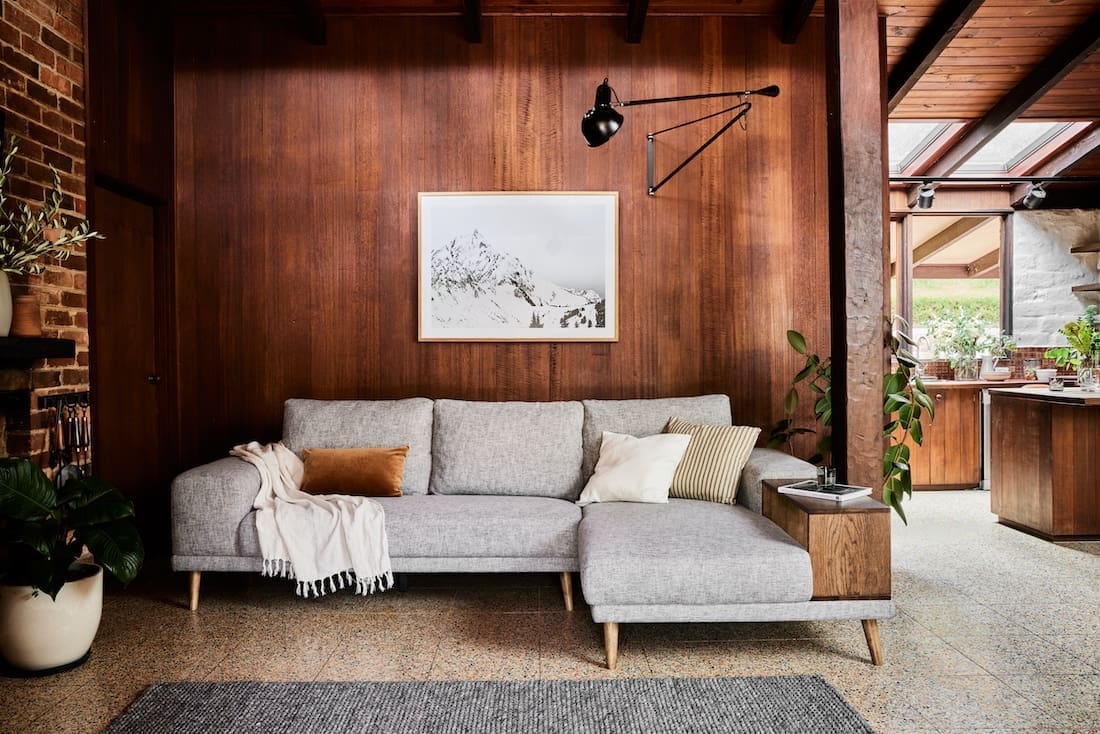
6. Select sustainable materials
As well as buying items made to last, we can reduce our environmental impact by selecting sustainable materials.
Sustainable materials include:
- FSC certified timber
- bamboo
- cork
- recycled plastic, such as chairs made of recycled plastic bottles
- recycled fabric
- ethically sourced wool.
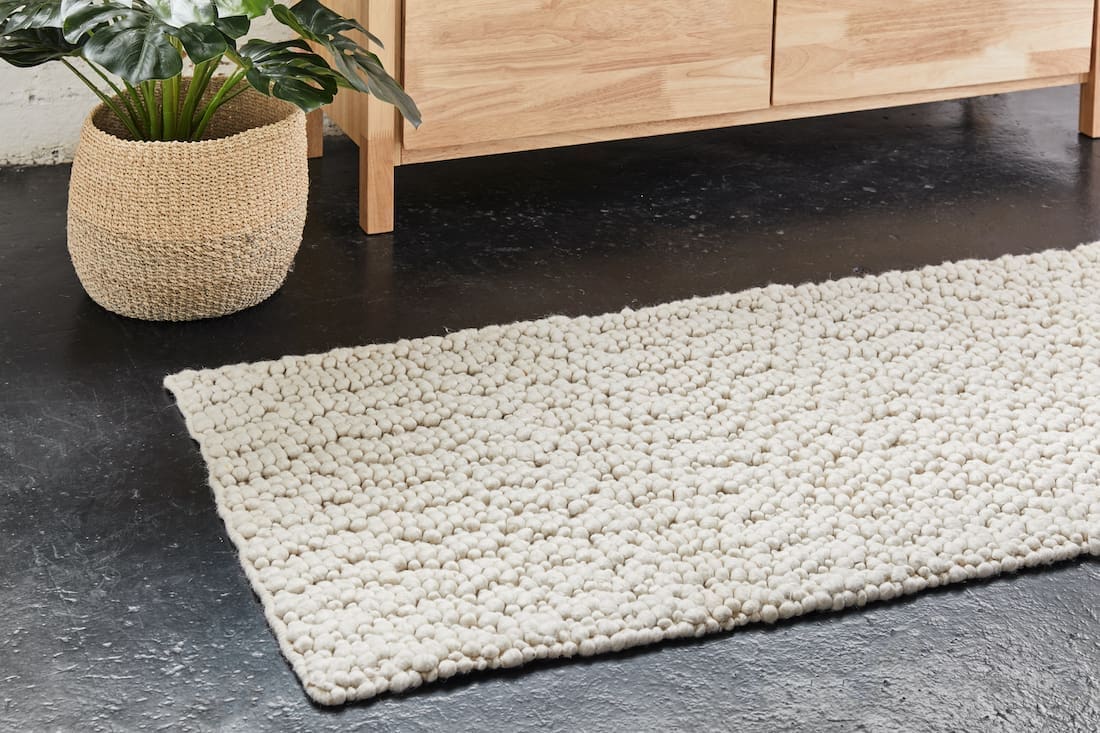
7. Look for multi-functional pieces
Our lifestyles change over time, and with it so do our needs. One way to avoid constantly replacing our furniture is to look for multi-functional pieces that can adapt with our changing needs.
Think modular sofas that can be easily reconfigured, expandable dining tables, side tables that can also work as stools and so on. The most popular multifunctional pieces from B2C Furniture are their range of bunk beds. Smart on space when they are assembled as a bunk bed… but cleverly can become two separate beds as well. So when the kids grow out of having a shared bedroom or having regular sleep overs, the beds can be separated. Genius, right?!
By thinking ahead — and a little out of the box — you can invest in furniture and other items for the home that will last long-term.
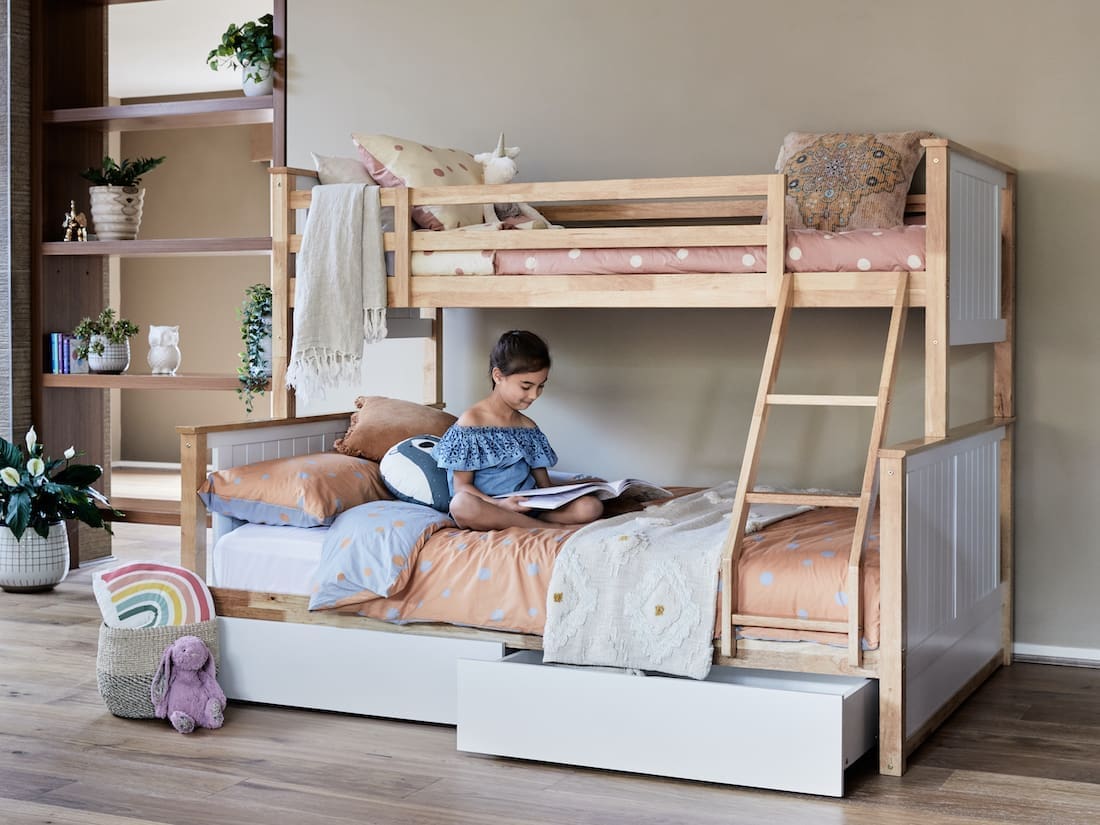
8. Donate, recycle, sell or swap unwanted items
Many of us are in the habit of donating good quality items to charity. But what about things that are damaged or soiled? Rather than sending them to landfill, there may be other ways to recycle them. For example, unusable textiles may be donated to a local animal shelter to be used for animal welfare. Or Upparel is an amazing business that will pay you to collect unwanted textiles that they’ll use to create new products.
Every city has different initiatives for recycling, reusing or disposing of items safely. You may like to check out Recyclopaedia for helpful recycling information.
Has this article on how to decorate your home sustainably given you some ideas on how you could style your home? If you have any more ideas to add, we’d love you to join the conversation in the comment section below.


